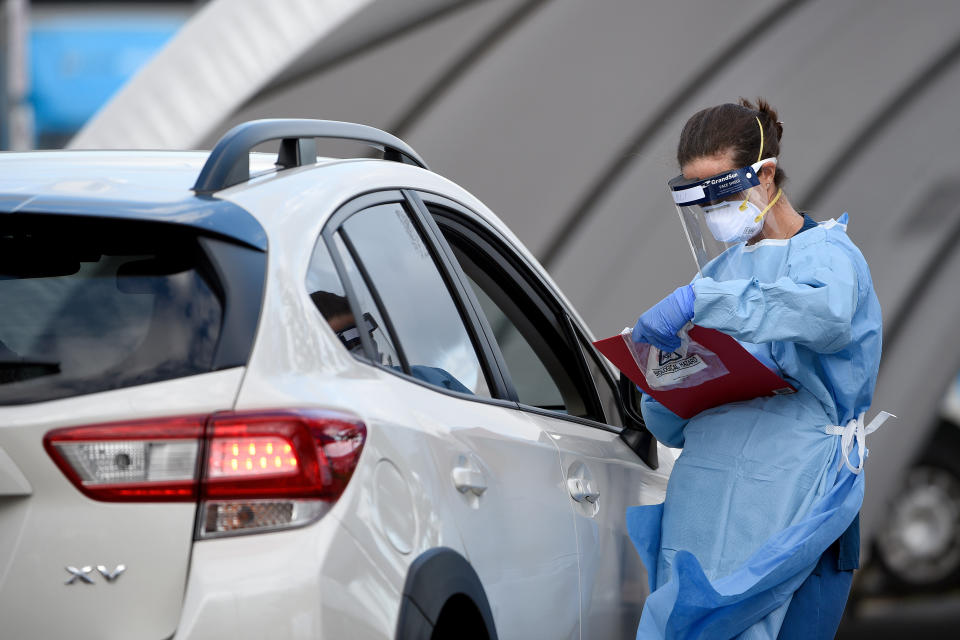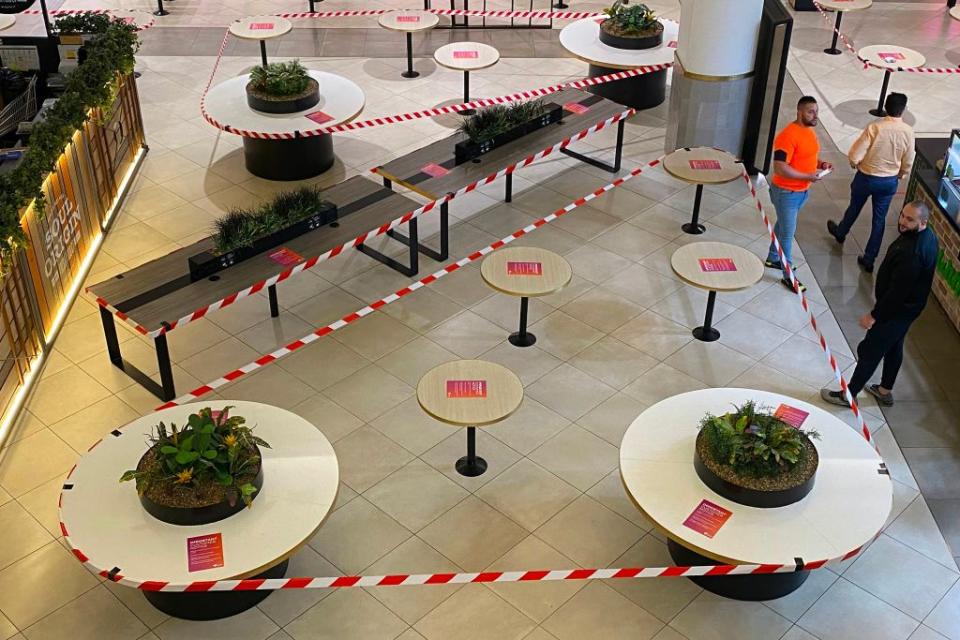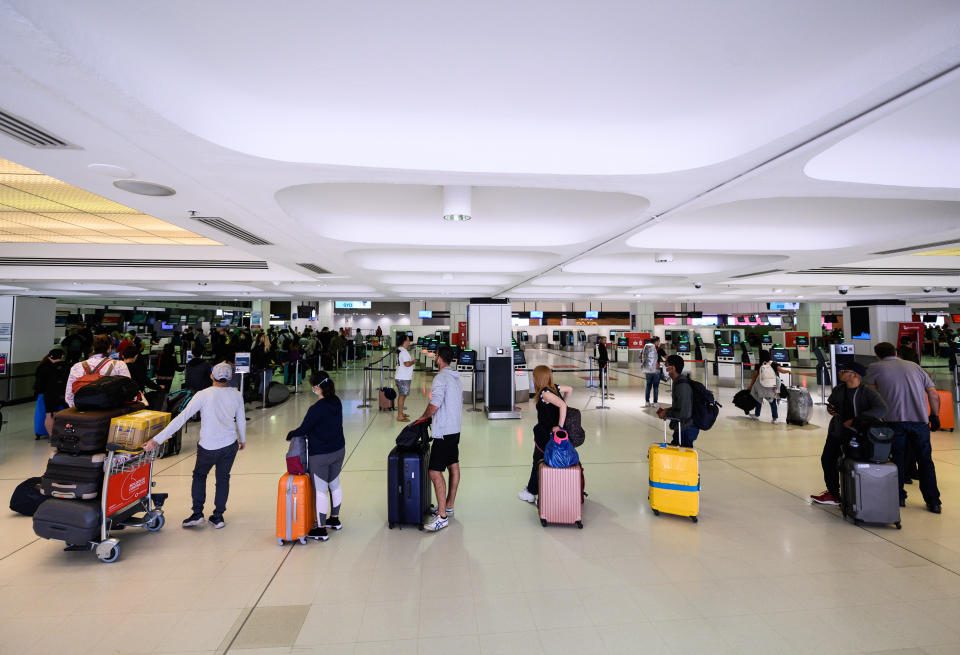The bizarre coronavirus symptom doctors are warning about
The coronavirus has now infected more than 2.6 million people worldwide, causing a range of symptoms from fever and dry cough to the temporary loss of taste and smell.
Now dermatology experts are warning of a new potential sign of the virus which may have previously gone overlooked: an inflammation of blood vessels in the hands and feet that’s been nicknamed “COVID toes”.
Characterised by a reddish-blue discolouration of the extremities, the condition is proving particularly prevalent among kids.
Please be aware there are skin signs of covid. Purple red papules on the fingers and toes. Looks like chilblains/ pernio. May have no other covid symptoms. Seen in young people.
Images of pernio like changes of Covid-19 from Italy @TamarPedsRheum @NataliaVasCan @IreneBlancoMD pic.twitter.com/5jKp04Yykq— Dawn Wahezi (@DWahezi) April 11, 2020
Amy Paller, chair of the Department of Dermatology at Northwestern University Feinberg School of Medicine, says that in the last few weeks, dermatologists across the US had begun seeing an influx of the condition.
“We're having a little bit of a mini epidemic in the paediatric dermatology world with these ‘COVID toes and fingers’ — particularly in those in the second decade of life,” Paller told Yahoo Life.
“We're hearing about all of these cases just popping into practices across the country ... Every day I'm talking to another one of my colleagues who's seeing a patient.”
Jennifer Huang, assistant professor of dermatology at Harvard Medical School and a member of the American Academy of Dermatology tells Yahoo Life she’s been seeing it too.
“The history is often the same — that somebody was outside not wearing warm socks or gloves and then they get these painful bumps,” Huang said.
“So it’s super interesting that we're seeing many more cases of this over the last couple of weeks. I'm in Boston where it’s still cold but it's April now, and many of us are seeing a lot more cases. And that seems to be true in other areas of the country where COVID-19 is really raging or surging.”
As cases of the unexpected new symptom continue to appear, here are is what you need to know.
The technical term for the condition is pernio
Latin for the word “frostbite”, pernio is a condition defined by the National Institutes of Health as “itchy and/or tender red or purple bumps that occur as a reaction to cold”.
Typically appearing within hours of exposure to frigid temperatures, the bumps can lead to more painful skin reactions such as “blistering, pustules, scabs and ulceration”.

“It happens in healthy people but sometimes it can happen in autoimmune conditions, most commonly lupus,” Huang said.
The condition can be caused by a variety of conditions, including eating disorders, celiac disease, viral hepatitis and HIV. Huang says it has not been linked to other coronaviruses.
It’s typically seen during the winter months
Part of the odd nature of the current “mini-epidemic” of pernio among kids, according to Paller, is the timing.
“Pernio shows up for those of us who live in northern climates in January, February, in the middle of winter,” she said.
“It's a cold-induced phenomenon where the blood vessels that are in these areas ... like the toes and fingers, will tend to have a spasm of these very peripheral vessels.”

Huang said it was an inflammation around the blood vessels, a response to cold temperatures.
“It typically happens during the wintertime or if someone's not wearing adequate clothing when they're outside and they will get these painful bumps that will appear and will usually go away within a span of a week or two,” she said.
Treatment usually involves keeping the extremities warm
The condition generally goes away on its own, but Huang and Paller say that certain medicines — as well as heat — can be used to lessen the irritation.
“We tend to treat it by addressing the discomfort and trying to dilate vessels with [blood pressure] medications like nifedipine, for example,” Paller said.
“And of course in that situation, trying to really keep the hands and feet warm.”

With COVID-19, which may be causing the condition in the absence of frigid temperatures, it’s more complicated.
“You know, our usual technique of trying to keep things warm is probably not going to do much here,” Paller added.
It may be a sign of asymptomatic COVID-19 patients
The first reports about pernio occurring in kids with COVID-19 came from Italy in late March, where case reports detail the painful red blisters and sores developing.
It’s a large part of the reason why American dermatologists are suspecting a potential link between the sudden rise in the condition amid COVID-19.
“These are often otherwise perfectly healthy kids with very mild symptoms — and frankly, because it’s hard to get some these tests still, we don’t know for sure that they have COVID-19,” Paller said.
“So I think we're going to learn a lot more in the next week or two or month.”
Huang said she saw about five patients with pernio in the last week.
“We think that it is associated with COVID-19 and we think that they are either asymptomatic carriers ... or that it could be part of a convalescent-phase where you had COVID-19 and you're developing these symptoms later ... we’re trying to get them tested.”
– Yahoo!Life
Do you have a story tip? Email: newsroomau@yahoonews.com.
You can also follow us on Facebook, Instagram and Twitter and download the Yahoo News app from the App Store or Google Play.




